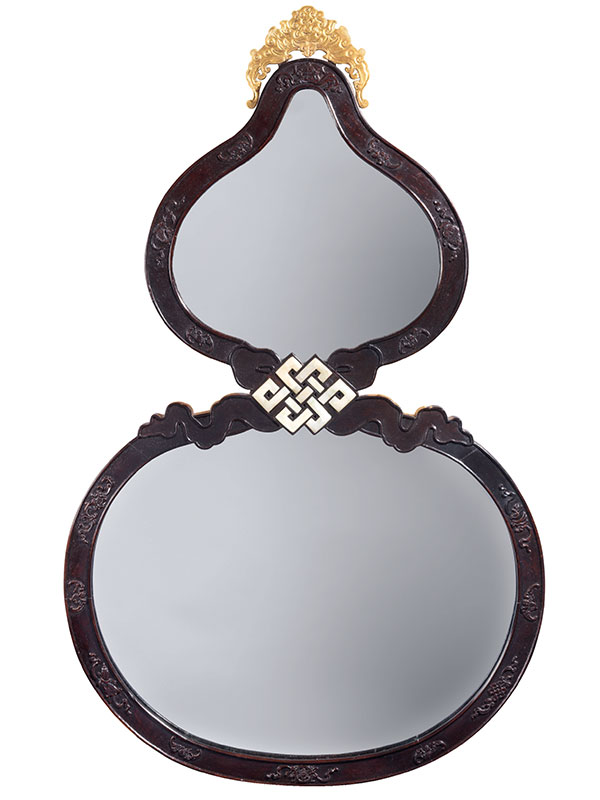Hardwood mirror of double gourd shape
China, 19th century
A mirror in the form of a double gourd. The hardwood frame is carved in shallow relief with the “Eight auspicious symbols of Buddhism”, respectively a canopy, a vase, a fish, a spray of lotus blossom, a conch shell, an endless knot, the wheel of the law and a parasol. These alternate with four bats on the upper gourd and four bats on the lower gourd. The middle is formed by a be-ribboned ‘endless knot’ symbol, composed out of jade pieces. A giltbronze handle is attached to the top. This is delicately cast as a bat with outstretched wings.
This unusual mirror takes the form of a double gourd. The double or bottle gourd (hulu) is an important auspicious symbol in Chinese art, with many meanings. It symbolizes fertility and stands for ‘ceaseless generations of descendants’ and blessings.[1] The “Eight auspicious symbols of Buddhism” are a popular decorative element during the Qing dynasty. They originated in India and came into China with the introduction of Tibetan Buddhism in the Yuan dynasty. They later became integrated with Daoism and were believed to bring peace and blessings.At first these symbols did not possess a specific order, but by the Qianlong period they became codified in the following order: wheel, conch, parasol, canopy, lotus blossom, vase, twin fish, and endless knot.[2] Bats are a long-life symbol, so one can conclude that this mirror is imbued with highly auspicious symbols, signifying a wish for a long life.
- Tse Bartholomew, T. Hidden Meanings in Chinese Art, Asian Art Museum, San Francisco, 2006, 3.3, p. 61
- Tse Bartholomew, T, op cit. 7.18, p.185

